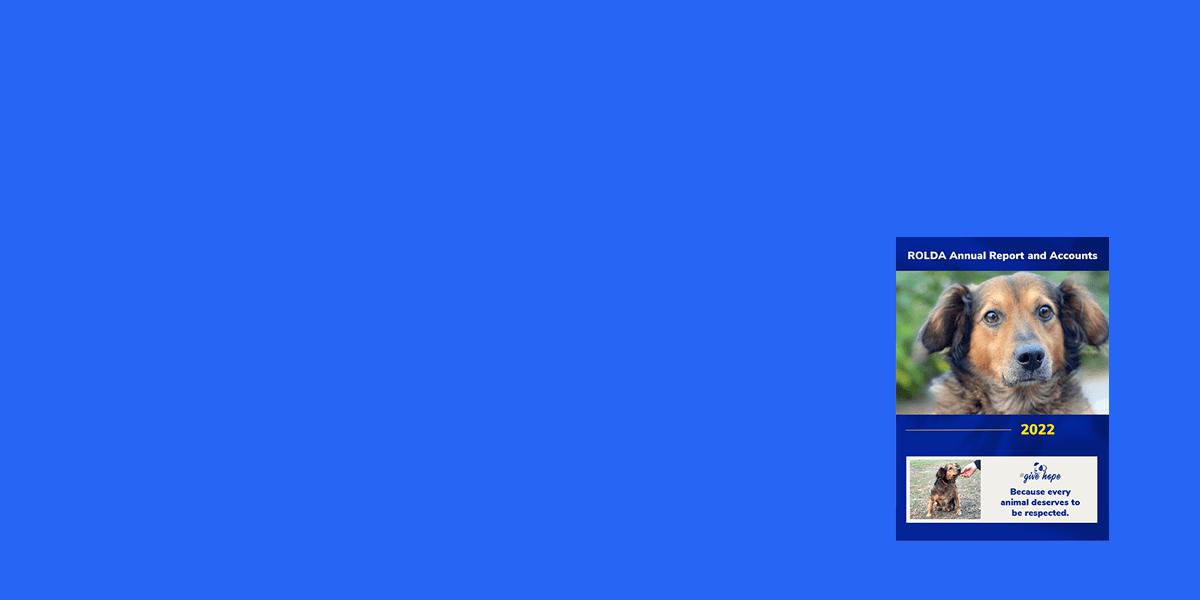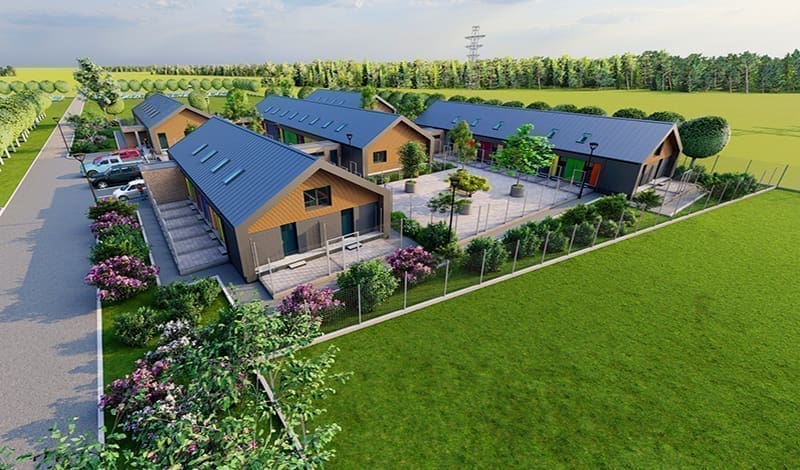Protection against deadly heartworm (Dirofilaria)

What is Dirofilaria immitis?
Dirofilaria Immitis is a blood-borne parasitic worm that lives in the heart, lungs, and associated blood vessels of infected animals. Dirofilaria is the cause of heartworm disease—a serious and potentially fatal disease in domestic pets, wild animals, and humans.
These worms cause severe lung disease, heart failure, and damage to other organs. Female worms are 6” – 14” long (15 – 36 cm) and 1/8” wide (5mm). Male worms are half the size.
Adult heartworms may live up to five years. During this time, the female produces millions of offspring called microfilaria, which live in the small vessels of the bloodstream.
An infected dog may have as many as 300 worms present when diagnosed.
How is Dirofilaria transmitted?
Transmission requires a mosquito.
Dirofilaria begins its life cycle when a female mosquito bites an infected dog and ingests the microfilariae. The microfilariae develop for 10-30 days in the mosquito’s gut and then enter its mouthparts. At this stage, the microfilariae are infective larvae.
When an infected mosquito bites the dog, the larvae can complete their maturation.
The larvae migrate into the bloodstream and move to the heart and adjacent blood vessels, where they mature into adults. They begin to mate and reproduce within 6-7 months.
What are the symptoms of Dirofilaria?
It usually takes several years before dogs show clinical signs of infection. However, the disease is diagnosed mainly in dogs between the ages of two and eight. Heartworm disease is rare in dogs less than one year of age because the microfilariae take five to seven months to mature into adult heartworms after infection.
Unfortunately, by the time clinical signs are seen, the disease is usually well advanced.
Adult heartworms clog the heart and its major blood vessels, including the pulmonary artery. They also interfere with the valve action in the heart. Thus, the blood supply to other organs of the body is reduced, causing them to malfunction.
The signs of heartworm disease depend on the number of adult worms present, the location of the worms, the length of time the worms have been in the dog and the degree of damage that has been sustained by the heart, lungs, liver, and kidneys.
The most obvious symptoms are dry cough, shortness of breath, weakness, nervousness, listlessness, and loss of stamina. All of these signs are most noticeable following exercise—some dogs may even faint or become disoriented.
In advanced cases, congestive heart failure may be obvious, and the abdomen and legs will swell from fluid accumulation. Weight loss and anemia can also be symptoms.
Severely infected dogs may die suddenly during exercise or excitement.
Microfilariae (immature heartworms) circulate throughout the body but remain primarily in the small blood vessels where they inhibit blood flow, depriving cells of nutrients and oxygen.
Microfilariae primarily injure the lungs and liver. Destruction of lung tissue leads to coughing. Liver injury leads to cirrhosis of the liver, causing jaundice, anemia, and generalized weakness. The kidneys may also be affected and allow toxins to accumulate in the body.
How is heartworm disease diagnosed?
In most cases, simple blood tests will diagnose heartworm disease. Further diagnostic tests can determine if the dog can safely undergo heartworm disease treatment.
The following diagnostic procedures are recommended before treatment is started:
Serological test for antigens to adult heartworms (antigen test, ELISA, or SNAP test). This test is performed on a blood sample.
The previous drug used to treat heartworms contained high levels of arsenic and caused toxic side effects. Today, a new drug is available that causes fewer side effects, allowing for the successful treatment of more than 95% of infected dogs.
Dogs with prolonged heartworms have suffered substantial damage to the heart, lungs, blood vessels, kidneys, and liver. Some cases will be so advanced that it is safer to treat the organ damage rather than risk treatment to kill the heartworms.
Dogs in this condition usually die within a few weeks.
Treatment to kill adult heartworms:
Complete rest is essential after treatment. The adult worms die within days and decompose. The fragments are carried to the lungs, where they lodge in the small blood vessels and are reabsorbed by the body. This resorption can take weeks to months, and most post-treatment complications are caused by these dead heartworm fragments. This can be a dangerous period, so it is essential that the dog is prohibited from exercising for one month following the final injection of heartworm treatment.
Melarsomine is an injectable drug that kills adult heartworms in the heart and adjacent vessels. This drug is administered in a series of injections which must be scheduled according to the dog’s condition.
Many dogs will also be treated with an antibiotic known as doxycycline, to combat potential infection with bacteria that inhabit the heartworm.
Treatment to kill microfilaria:
In addition to adult heartworm treatment, a dog will receive a drug to kill the immature heartworms (or microfilariae). Following this, the dog will be started on a heartworm preventative.
Dogs with severe heartworm disease may require antibiotics, pain relief medications, special diets, diuretics to remove fluid accumulation in the lungs, and drugs to improve heart function before treatment for heartworms. Even after the heartworms have been killed, these dogs may require lifetime treatment for heart failure. This includes the use of diuretics, heart medications such as ACE inhibitors, beta-blockers or cardio glycosides, and special low-salt diets.
How can heartworm disease be prevented?
ROLDA dogs receive Heartgard for 6 months (May to October) to protect them against Dirofilaria, but that still leaves thousands of stray dogs around our sanctuary unprotected and at high risk of contracting the disease.
Heartworm disease can be prevented by using a heartworm preventive. Even a dog who has been successfully treated for heartworms needs a heartworm prevention program to prevent future recurrence. There are many safe heartworm preventives available today, so no pet should ever have to endure this dreaded disease.
Our dogs used to start Heartgard in June (the recommended month); however, due to severe climate change, we have been advised to administer the drug one month earlier, especially since our sanctuary is surrounded by forest, agricultural land, and the Danube and Siret rivers, making it a favorable habitat for mosquitoes to thrive.
The area is also home to hundreds of wild animals and stray dogs—all potential carriers of Dirofilaria.
This is Vasile. He was a victim of heartworm disease. We rescued Vasile, but he had already been battling deadly heartworms growing in his heart and lungs.
Unfortunately, his health had been severely compromised, and was too weak to survive the Melarsomine treatment.
The best chance Vasile had was a treatment using a combination of drugs for a minimum of 18 months (because heartworms do not begin to die until 18 months of treatment have elapsed) but, Vasile’s heartworms were far too advanced, having invaded nearly his entire heart and lungs.
Vasile seemed like one of the lucky strays who had escaped a serious injury or health problem.
In fact, he seemed surprisingly healthy the day we rescued him. But, Dirofilaria Immitis is a silent killer. Vasile lived with us for 5 weeks and passed away on May 2019.
Vasile is not the first dog we have rescued and then lost to heartworm disease, and, sadly, he won’t be the last. Stray dogs are extremely vulnerable to contracting this fatal disease because they do not receive heartworm prevention.
We can only hope that the next infected stray we rescue can be saved with treatment. In the meantime, we can continue to protect the dogs at our sanctuary who are not infected. Every one of our 650 dogs receives the 6-month heartworm prevention treatment from spring to fall.
The 6-month heartworm prevention treatment for all 650 dogs at our ROLDA sanctuary costs…
But a donation of €49 can protect 1 dog for 7 months against this deadly heartworm disease.
Without a doubt, when it comes to heartworm disease, prevention is far cheaper than treatment. Your donation today will help save a dog’s life.
Transparency is important for ROLDA, as well as showing gratitude to our dedicated supporters.
Individual donations are listed in the right column. When you make a donation directly on this page, your name and the amount will appear automatically. If you send a check or wire a donation marked “for protection against deadly heartworm”, we will add your donation manually. In case you don’t see your name and amount donated listed, please send us an email at contact@rolda.org
Estimated cost/unit $49
Annual estimated cost $34.300
Wall of fame
- Leah $200
- Melanie $50
- EVA $19
- ROLDA Suisse $ 7408
- ROLDA UK $ 6750
- ROLDA USA $ 7150
 non-US support +44 (0)161 531 8801
non-US support +44 (0)161 531 8801





















































